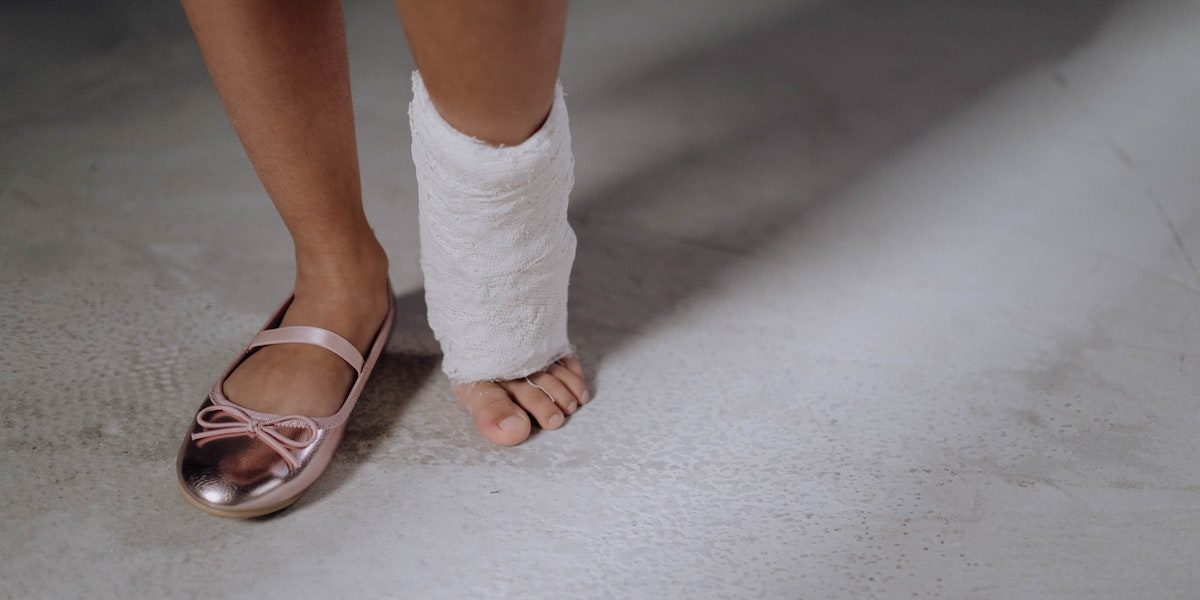Dancing in pointe shoes raises the risk of injury for female ballerinas. Complex balletic movements require elevated muscular efforts and can put excessive stress loads on the ankle bones. Not many biomechanical studies focus on ballet, even as findings could contribute to decreased injury risk for dancers. A number of factors, such as ground reaction forces, ankle sway, and shoe flexibility can affect a dancer’s injury risk. But which factors contribute most?
Around 85% of dance injuries occur in the lower extremities. In a study assessing injury prevalence in pre-professional ballerinas, 53.4% of injuries occurred in the ankle or foot. When studying injury types and their relation to joint hyper-mobility in professional dancers, researchers found the most ligament injuries in the ankle.
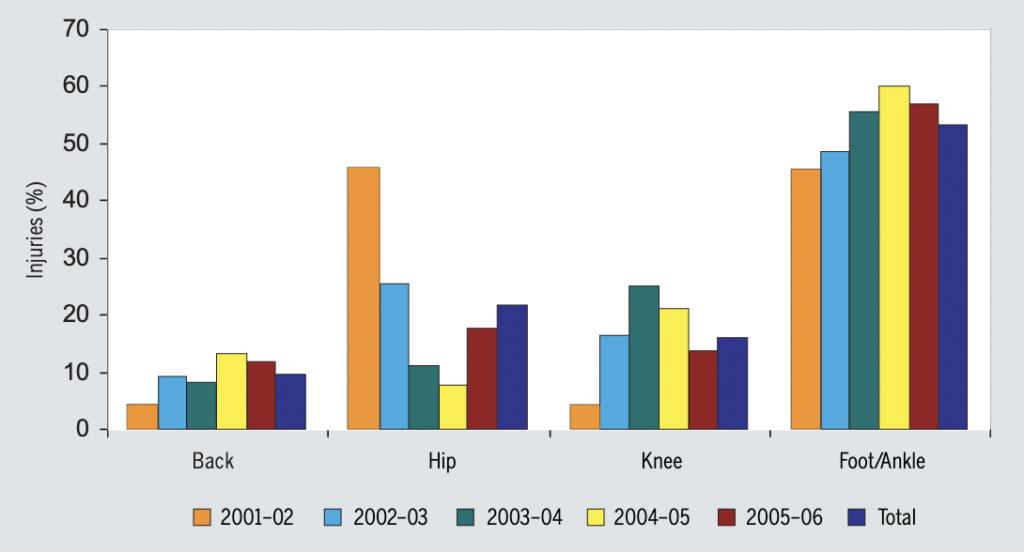
When a dancer goes en pointe, the ankle and foot enter full plantar flexion. In this position, the ventral (front) side of the foot withstands the most load. While en pointe, the talus bone experiences stress through axial (vertical) loads, which can overload the foot structure and potentially lead to bone stress injuries. Standing on both sets of toes, a dancer will feel average pressures of 1.5 MPa. In unilateral movements, the toe-box of one shoe supports the entirety of the body weight, increasing the pressure on the joints.
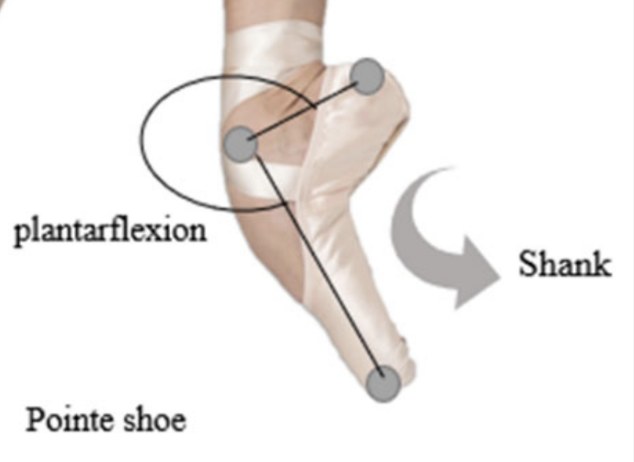
If the shoe is ‘broken in’ or ‘dead,’ the shank becomes very flexible, changing the distribution of force within the dancer’s joints. In the image below, an X-Ray shows feet in one dead and in one new pointe shoe. The foot on the left illustrates a decreased amount of space between the metatarsals and phalanges (shown in red circle), which occurs in dead pointe shoes. In the newer shoe (right), the joints are less compressed as the shoe is more supportive and force is appropriately distributed. Diminished support from dead pointe shoes contributes to decreased stability in the ankle and significantly more ankle sway when standing on both toes close together in the sous-sus position. Ankle sway has been linked with increased injury risk for dancers, because their instability may tempt them to overcorrect their body position.
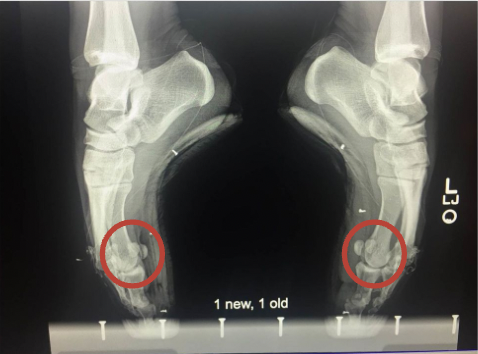
In a study analyzing ground reaction forces (GRF) in ballet dancers, GRF did not differ significantly between dead and new pointe shoes. According to another study, GRFs appear to be more associated with the type of movement rather than the condition of the shoe. In various jumping movements, dancers experience GRF magnitudes up to four or five times their bodyweight. The highest GRF occurs in a sauté (vertical jump) from first position, shown below.
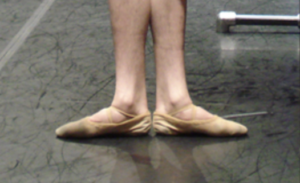
Ultimately, pointe shoes increase the loads on dancers’ feet. If the shoes are overused, the shoe cannot distribute those loads sufficiently, resulting in compressed joint spaces in the foot and increased ankle sway. Therefore, shoes influence occurrences of dance-related injuries. Ground reaction forces, however, increase considerably with the foot position and type of jump. While we know how these measurements affect injury risk, the most influential factor is still up for debate. If you’re interested in related dance mechanics topics, check out this article or this paper.
